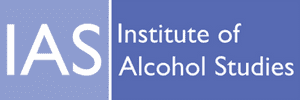New findings show that alcohol-related violence affects the poorest in society to the greatest degree, with the most deprived groups experiencing as much as 14 times as many incidents of alcohol-related domestic violence every year, compared with the least deprived.
These findings come from the new Institute of Alcohol Studies report, ‘Inequalities in victimisation: alcohol, violence, and anti-social behaviour’, which depicts the stark differences between socioeconomic groups experiencing alcohol-related violence and anti-social behaviour in England and Wales.
Using Crime Survey data over a five-year period (2013/14 to 2017/18), the study calculated incidence and prevalence rates specific to different socio-economic groups for several forms of alcohol-related violence – including domestic, stranger, and acquaintance violence – as well as alcohol-related anti-social behaviour.
This work has taken on new urgency in recent weeks, as reports of domestic violence incidents have risen dramatically under the COVID-19 restrictions.
The data show that higher rates of alcohol-related acquaintance violence also drive these patterns of harm among lower socioeconomic groups, with the most deprived groups experiencing up to seven times as many incidents of this every year compared with the most advantaged groups.
Lower socioeconomic groups were also most likely to be on the receiving end of ‘high frequency’ alcohol-related anti-social behaviour in the last year – of those who experienced alcohol-related anti-social behaviour in the lowest socioeconomic groups (social renters, those unemployed, and those on the lowest incomes), as many as half were victims of this on a weekly basis.
Report author Lucy Bryant, research and policy officer at the Institute of Alcohol Studies, said:
‘Alcohol-related violence accounts for two fifths of all violence in England and Wales today, and it is the most deprived groups bearing this burden to the greatest extent. It is vitally important policymakers take action to address not only this disparity in victimisation, but the structural drivers that lie behind it.’
The report concludes with a call to remove barriers to support services for those from the most deprived communities, including substantial improvements to the provision of publicly funded domestic violence services, and in the availability across the population of alcohol treatment services, alcohol interventions in primary care and emergency services settings. The report also recommends investigating population level pricing interventions – such as minimum unit pricing – for its potential to disproportionately benefit the most deprived groups.
You can watch a video summary of the report below.
